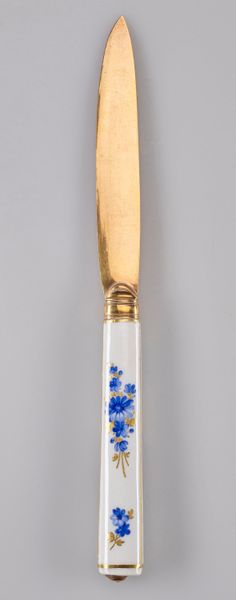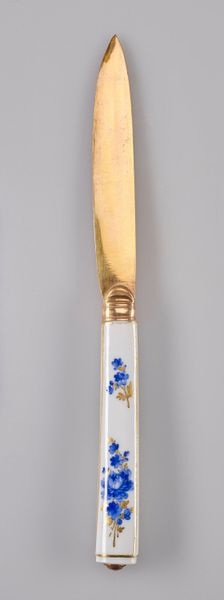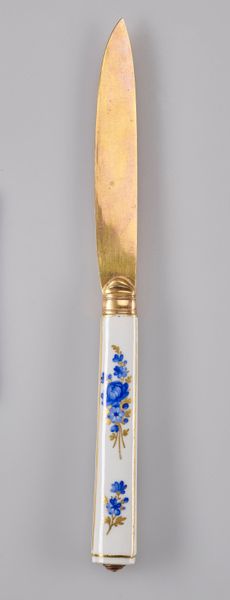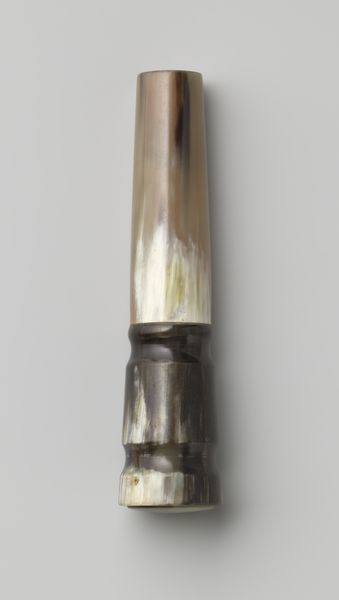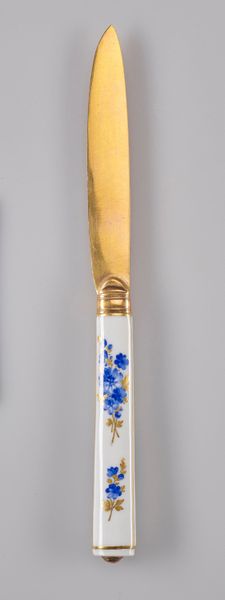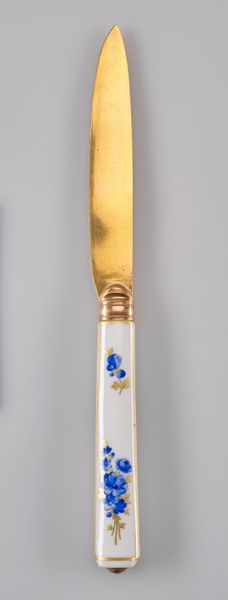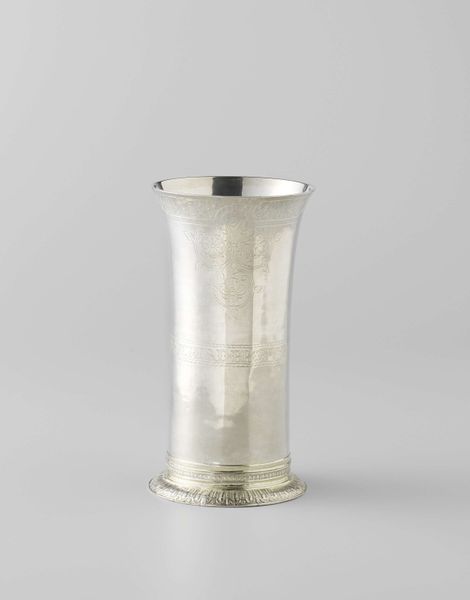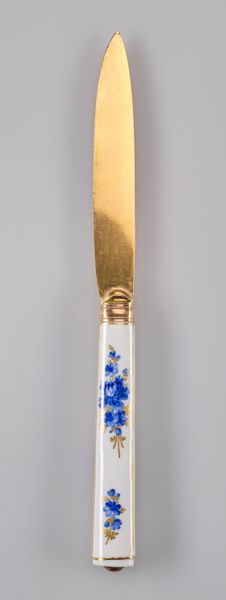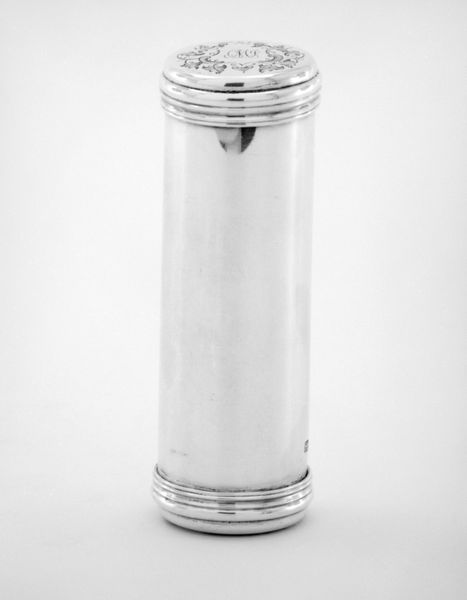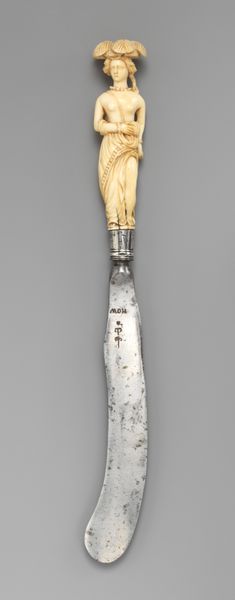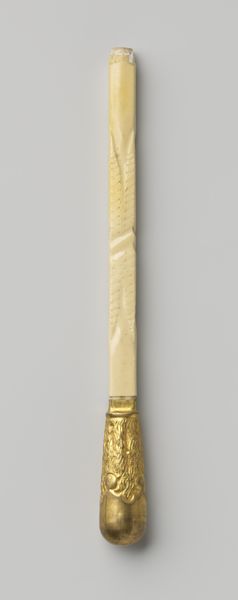
silver, metal, paper
#
silver
#
metal
#
paper
#
islamic-art
Dimensions: 15-5/16 x 3-1/8 x 2-5/16 in. (38.9 x 7.9 x 5.9 cm)
Copyright: Public Domain
Here we have a Megillah scroll with case, of unknown date, made by an anonymous artist. The piece presents a study in form and function. At first glance, the eye is drawn to the cylindrical form of the case, its smooth, silver surface reflecting light in a way that emphasizes its simple elegance. The engraved designs and Hebrew text add layers of visual interest. Notice how these elements are not merely decorative; they serve as signs, each contributing to the object's narrative and cultural significance. The handle and crown-like structure provide both balance and visual contrast, altering the smooth lines with ornate detail. This piece invites us to consider how objects can function as cultural texts. Its form and ornamentation work together to convey meaning. As you continue to explore, consider how this object challenges fixed notions of art, functioning instead as a dynamic site of cultural expression.
Comments
minneapolisinstituteofart almost 2 years ago
⋮
As is true with all biblical scrolls, the Esther Megillah is written entirely by hand on parchment. The scroll is contained within an inscribed, decorative silver case. The inscription on this piece identifies the scroll as an Esther Megillah (אסתר מגילה). This scroll holds particular significance for the celebration of Purim, which commemorates events believed to occur in mid-5th century BCE Persia, during which the Jewish people were miraculously saved from genocide by the Jewish Queen Esther against the plot of King Ahasuerus’ advisor, Haman. During the celebration of Purim, the Scroll of Esther is read aloud. Participants dress up in costumes and actively participate in the reading by reacting to various parts, for example cheering for Queen Esther or booing at the mention of Haman’s name. Through this act of audience participation, Jewish people continue the tradition of renewing biblical text for each generation.
Join the conversation
Join millions of artists and users on Artera today and experience the ultimate creative platform.
